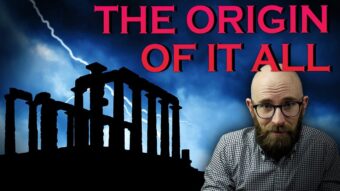“Unraveling the Mysteries: What Sparked the Dawn of Ancient Greece?”
On this note, even though we still have not deciphered Linear A, we know the two scripts were used for very different purposes. Linear A seems to have been used more often outside of record-keeping and has been used in religious and other functions. For all we know Linear A might contain poetry, or narratives. But unfortunately, if they did practice poetry, it wasnât recorded in Linear B and remained oral like Balkan epic poetry today. In the end, Linear B is, for all intents and purposes, was a very clunky script made up of more than 200 symbols each representing a syllable. There is a reason it was forgotten once the Mycenean civilization collapsed.
But in any event, from what little we gleaned from Linear B that wasnât strictly records, the Mycenaeans worshipped much of the same gods and goddesses as the later Greeks. They had the same or similar sounding names, and from what little details gleaned, functioned in much the same role. There were some differences, however. Some gods were an adaptation of the Minoan goddesses, especially the chief goddess whom we know very little about. Others came with the Greeks into the region and were forgotten by the time of Homer, or changed identities. Religious worship was also centralized in the palaces rather than shrines outside of them. We have statues from both civilizations as well.
So, where did this seemingly prosperous society all go wrong? The late Bronze Age collapse is to blame. In 1200 the Myceneans faced a rapid catastrophe. Another unspecified catastrophe affected the surviving Mycenean centers around 1150. Both catastrophes were a part of the larger scale bronze age collapse which included the invasions of the sea peoples. The sea peoples are still one of historyâs biggest unsolved mysteries. They were probably more than one peoples who migrated somewhere from the North, North Eastern, and East Mediterranean. Some Greeks may have also been a part of the sea peoples according to Egyptian records. These peoples invaded or attempted to settle into places such as the Nile Delta, Hittite lands, and into the arable lands of the Myceneans. The destruction depopulated even small towns and caused migration waves away from vulnerable settlements to safer areas. Such was the case in the mainland with Achaea and Arcadia, or into the Western coasts of Asia Minor. Some unknown force destroyed the main palaces of the Myceneans. Some palaces and larger settlements were rebuilt only for another unknown force to destroy them again a few decades later. We donât know if these forces were the sea peoples or some other nation, or if it was Mycenean infighting.











